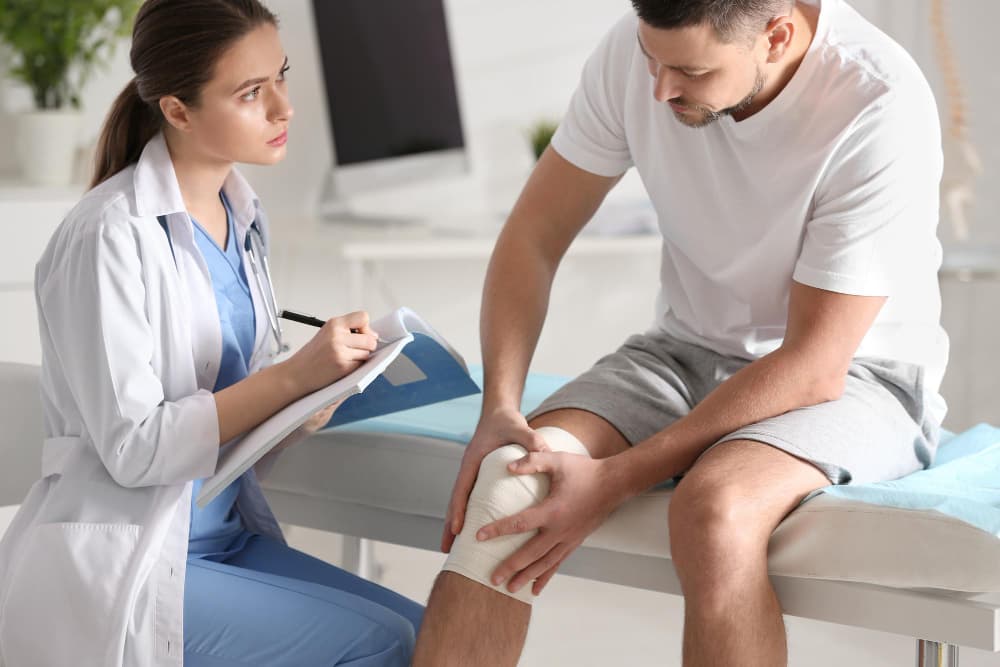Conventional Management
Conventional management in orthopedics refers to the standard and widely accepted approaches for treating musculoskeletal conditions and injuries, often without employing advanced or innovative techniques. This traditional approach encompasses a range of interventions such as rest, physical therapy, anti-inflammatory medications, pain management, and, if necessary, surgical procedures. Rest and immobilization may be recommended for acute injuries, while physical therapy aims to improve strength, flexibility, and overall function. Non-surgical methods, including the use of braces, casts, and medications, are commonly employed to manage orthopedic conditions. Conventional orthopedic management is rooted in evidence-based practices and is often the initial course of action before considering more invasive or specialized treatments. It provides a well-established foundation for addressing a wide spectrum of musculoskeletal issues, offering effective solutions for many patients within the standard practices of orthopedic care.

Common reasons
- Acute Injuries: Conventional management is often the first line of treatment for acute injuries such as fractures, sprains, and strains. Initial steps may involve rest, ice, compression, and elevation (RICE), along with pain management.
- Overuse Injuries: Conditions resulting from repetitive stress or overuse, such as tendinitis or stress fractures, are often initially managed conventionally. Rest, activity modification, and physical therapy may be recommended.
- Osteoarthritis: For early-stage osteoarthritis, conventional management includes lifestyle modifications, pain medications, and physical therapy. Assistive devices like braces or canes may also be utilized.
- Back Pain: Non-specific lower back pain is often managed conventionally with activity modification, physical therapy, and pain medications. Most cases of back pain resolve with conservative measures.
- Soft Tissue Injuries: Injuries to muscles, ligaments, and tendons, such as muscle strains or ligament sprains, are typically managed conventionally with rest, physical therapy, and, if needed, the use of supportive devices like braces.
- Inflammatory Conditions: Conditions with an inflammatory component, such as bursitis or synovitis, may be managed conventionally with anti-inflammatory medications, physical therapy, and injections.
- Joint Instability: Conservative measures are often attempted first for joint instability issues, with physical therapy aimed at strengthening surrounding muscles and supportive structures.
- Orthopedic Infections: In cases of infections affecting bones or joints, conventional management involves antibiotic therapy, often in combination with surgical drainage or debridement if required.
- Ligament Injuries: Mild to moderate ligament injuries, like partial tears, may be managed conventionally with rest, bracing, and physical therapy. Severe cases may require surgical intervention.
- Preventive Measures: Conventional management is also crucial in preventive orthopedics, emphasizing proper body mechanics, ergonomic considerations, and lifestyle modifications to reduce the risk of injuries and degenerative conditions.
After undergoing surgery as part of conventional management in orthopedics, patients enter a carefully structured postoperative recovery phase. The immediate post-surgery period involves close monitoring for any signs of complications, such as infection or impaired wound healing. Pain management strategies are implemented to ensure patient comfort, often involving a combination of pain medications and physical therapy. Physical therapists work closely with patients to guide them through rehabilitative exercises, gradually restoring mobility, strength, and function. Depending on the nature of the surgery, weight-bearing restrictions or the use of assistive devices may be advised initially. Follow-up appointments with orthopedic specialists are scheduled to assess the progress of healing, monitor the success of the surgery, and make any necessary adjustments to the rehabilitation plan. Patient compliance with prescribed medications, activity restrictions, and rehabilitation exercises is crucial for optimizing outcomes and facilitating a smooth recovery. Conventional post-surgery care in orthopedics aims to promote effective healing, restore normal function, and enhance the overall quality of life for patients.